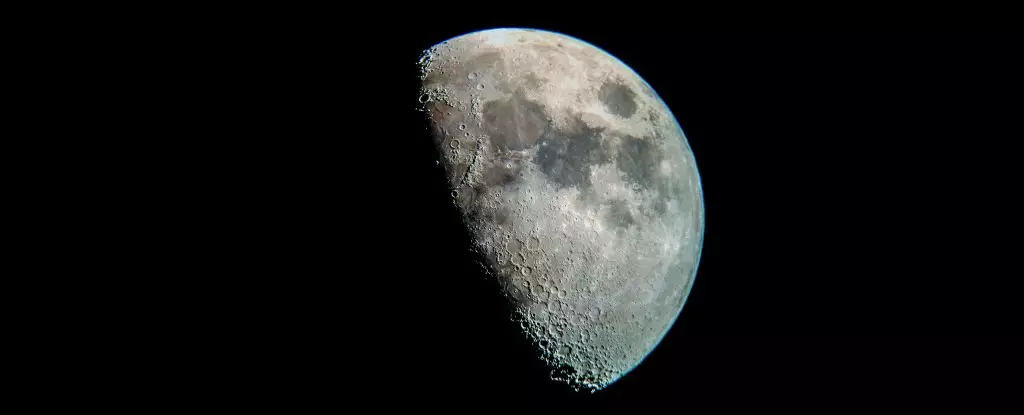Recent research suggests that the Moon may have formed much closer to the time of Earth’s origin than scientists previously estimated. A collaborative effort involving researchers from the United States, France, and Germany proposes that the formation of Earth’s only natural satellite occurred around 4.53 billion years ago. This new timeline positions the Moon’s creation hundreds of millions of years earlier than traditional estimates, potentially shedding light on several long-standing enigmas regarding its characteristics and evolution.
Geologist Francis Nimmo and his team from the University of California Santa Cruz champion this revised understanding, speculating that this new perspective could enrich our comprehension of both the Moon and the Earth. The conventional timeline was based on myriad geological and meteoritic data, but the researchers’ fresh analysis provides compelling evidence that could alter the narrative surrounding lunar geology. This new approach challenges existing paradigms and opens the door to exciting possibilities regarding early solar system dynamics.
To understand the Moon’s formation, it is essential to delve into the chaotic environment of the early solar system. When the Sun ignited approximately 4.6 billion years ago, it was surrounded by a tumultuous disk of gas and dust that gradually coalesced into the planets we recognize today. Within this chaotic setting, scientists hypothesize that the Moon was birthed from a colossal impact involving a celestial body roughly the size of Mars crashing into a nascent Earth, which was still in a molten state.
This monumental collision potentially ejected vast amounts of mass from Earth into orbit, coalescing to form the Moon. Following its establishment, the Moon is believed to have experienced a primordial magma ocean—a vast expanse of molten rock that eventually cooled and solidified into the surface we observe today. Traditionally, the prevailing view posited that this collision transpired approximately 4.35 billion years ago, but a deeper examination reveals a more nuanced picture.
The Enigmatic Zircon Crystals
One of the pivotal turning points in understanding the Moon’s age has come from studies on lunar zircon crystals. These crystals serve as chronological markers due to their unique formation properties; they integrate uranium while excluding lead. As uranium decays into lead over time, scientists can determine the crystals’ age with remarkable precision based on the uranium-lead ratio.
Surprisingly, some zircon crystals brought back from lunar missions date back significantly further than the 4.35 billion-year estimate, with ages of 4.46 billion and even 4.51 billion years noted. This inconsistency poses a dilemma for scientists: how could such ancient zircons exist alongside a body of rock dated at 4.35 billion years that is assumed to have formed from a global magma ocean?
Resolving the Discrepancy
In a bid to address this mismatch, Nimmo’s team engaged in rigorous analysis and modeling. They suggest that the Moon’s formation could indeed have occurred earlier, potentially resolving the presence of ancient zircon crystals. Their hypothesis proposes that if the Moon formed around 4.53 billion years ago, it could have experienced extensive remelting of its crust around 4.35 billion years ago. This theory elegantly reconciles the enigma of the older zircons with the younger lunar surface geology.
The dynamics of the Moon’s early orbit may have played a critical role in this process. Initially, the Moon’s orbit was likely elliptical, exposing parts of its surface to extreme tidal forces. Such forces generated substantial frictional heat, possibly resulting in surface melting that would last for tens of millions of years. This compelling interplay of celestial mechanics thus accounts for the apparent contradictions in age assessments of lunar materials.
This reframed timeline has significant implications for our understanding of the Moon’s geological history. It could explain why the Moon has fewer large impact basins than theoretical models predict from the early solar system’s bombardment phase. A tidal remelting event could have erased many of these basins, fundamentally reshaping the lunar landscape.
Additionally, the disparity in metallic content between Earth and the Moon may also be clarified. Understanding that the Moon once endured remelting after its formation suggests that metallic elements introduced during the planetesimal impacts could have sunk beneath the surface, escaping our observation today. The exploration of these topics contributes to a more coherent narrative regarding not only the Moon’s history but also its intricate relationship with Earth.
Ultimately, these groundbreaking insights underline the complexity of lunar and planetary formation, challenging us to rethink our cosmic history continually. As new findings emerge from ongoing research in lunar geology, they enrich our understanding of planetary systems, shaping our quest to uncover the secrets of the universe’s past.


Leave a Reply